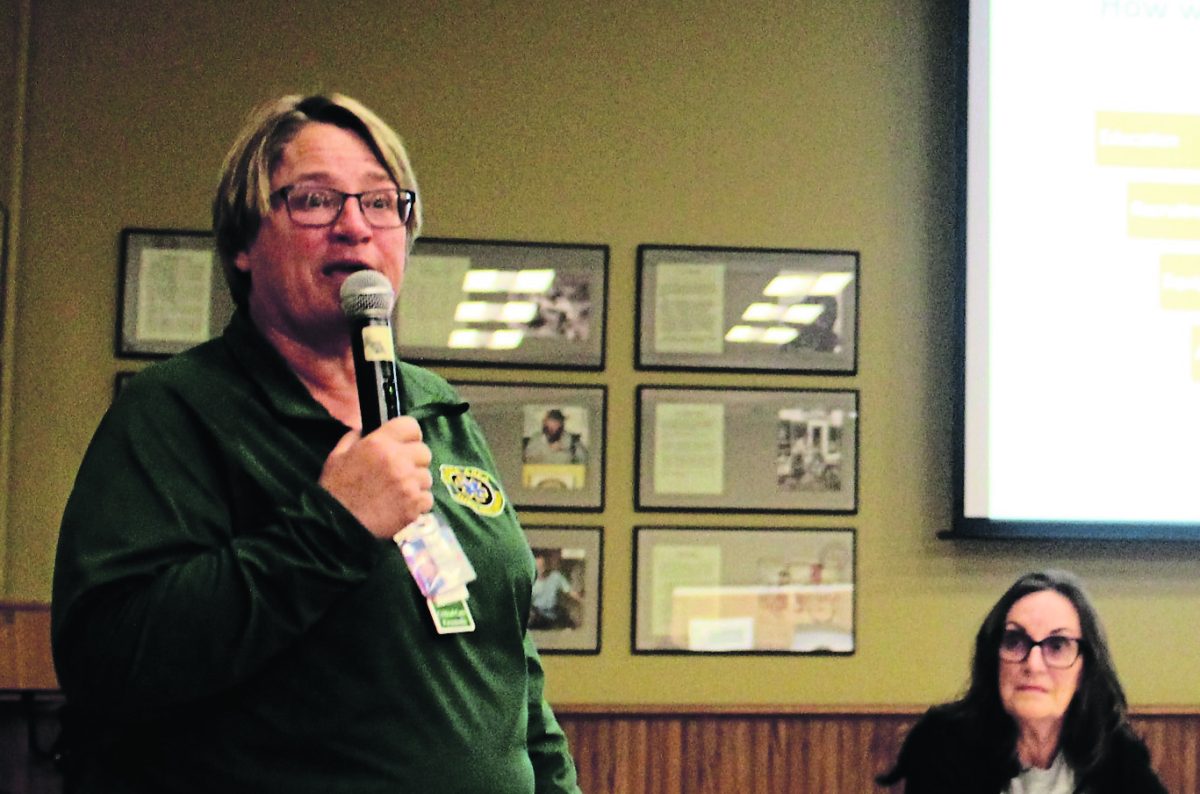When Jones County voters head to the polls Nov 8, the county’s “essential” EMS designation will officially be on the line as voters will be asked to approve a $.35 per $1,000 assessed onto property taxes to provide area services with extra funding.
The funding would be split between the services which cover portions of the county: Anamosa, Monticello, Cascade, Midland, Oxford Junction, Olin, Mount Vernon, Mechanicsville and Martelle, the latter of which is a non-transporting service.
The rate was the recommended rate put together by the EMS commission appointed following the “essential” designation to study the needs of EMS and make a recommendation on how best to finance the new funding. The structure of the commission includes the non-voting members consisting of EMS service directors from the county and a member of the board of supervisors. The voting members represent each service area and each supervisors appoints one member each.
There’s no unified way in which the county’s various services operate, some are city run, some combined with fire and some are privately run, like Anamosa’s. Staffing also varies from professional services, to a completely volunteer and everywhere in between. Staffing has become an issue at services across the county, particularly at the volunteer services as they look to attract new volunteers willing to put in the time and money to go through the training.
The levy would give services an additional stable revenue stream. Currently, services are funded through fundraisers, grants, bills for service (for transporting services) and subsidies either from their municipality or a private hospital. The commission decided to go the property tax route for funding, which the supervisors approved, believing it was more stable than income tax. Commission members felt $0.35 was the correct number property values and the financial information provided by the area EMS services, though the actual need was closer to $0.75 (the maximum allowed by the legislation), according to members of the commission.
“This $0.35 isn’t going to make all of our services whole,” Britt Smith, administrative director with the Monticello service, said. “We are basically trying to put a band-aid on a gaping wound.”
However, they wanted to be practical.
“We decided as a group at this time we just didn’t feel right about it, so we kind of split it in half,” commission member Mark Robertson said. “We agree it’s just a band-aid, but also we wanted it to pass.”
Based on current assessment values, the levy would give the services an extra $431,000. For a property assessed at $100,000, county residents would see their tax bill increase by $35.
Just as each service operates differently, likewise, there is not unified way in which they would need to use the funds they are appropriated. Needs could range from personnel recruitment to updating equipment.
“Each service has a different need for the money,” Anamosa ambulance director Sheila Frink said.
As the advisory board has talked to people about the designation and funding, many didn’t realize that EMS was not essential like fire and police services and did not already have funding built in.
For those members of the public in attendance at the town hall to ask questions, they sought clarity on how the deficits the services needed funds to help fill developed. Questions were also asked about how the services were paid. Frink said approximately 42% of the county’s patients were Medicare or Medicaid patients, with payouts capped at generally around 30% of what services are actually billing.
While large metro areas can make up for that with pure volume, Jones County services cannot.
“We’re small, that we’re not busy enough to create that revenue to pay for all of these expenses, like Des Moines, Cedar Rapids. They produce enough calls that they can maintain a better deficit,” Frink said.
While the failure to pass the levy wouldn’t mean the immediate cessation of any particular service, the service heads said smaller services could not continue for much longer without having a way to attract new bodies and the deficits currently being subsidized could not continue to be indefinitely. Eventually, the county may be forced to do more with less, meaning longer wait times for services.
Exactly how funds would be allocated has yet to be determined, though the idea of using the formula already in place for fire calls has been brought up as a possible option. The focus at present remained educating the public on why the need for funding existed and getting the levy passed.
The county is pioneering in its bid to pass the levy. Rep. Lee Hein was a key sponsor of the new law, the bill was signed in Monticello and the county is one of fewer than 10 that are taking the levy to a vote.
“There are several counties around us that are looking to Jones County to see how we handle it and what they can learn from the path that we forge for them,” Smith said.
For the levy to pass, it will require a 60% approval. If the vote fails, the county will lose its designation and have to start the entire process over again.
Town hall seeks to educate ahead of EMS vote
Jake Bourgeois
jake.bourgeois@wcinet.com
November 3, 2022
Jake Bourgeois • Staff Photo
Anamosa ambulance director Sheila Frink gave a presentation ahead of fielding questions at the Vote Yes for EMS! Town Hall meeting held Oct. 25 at the National Motorcycle Museum in Anamosa as commission member Jill Parham looks on.

